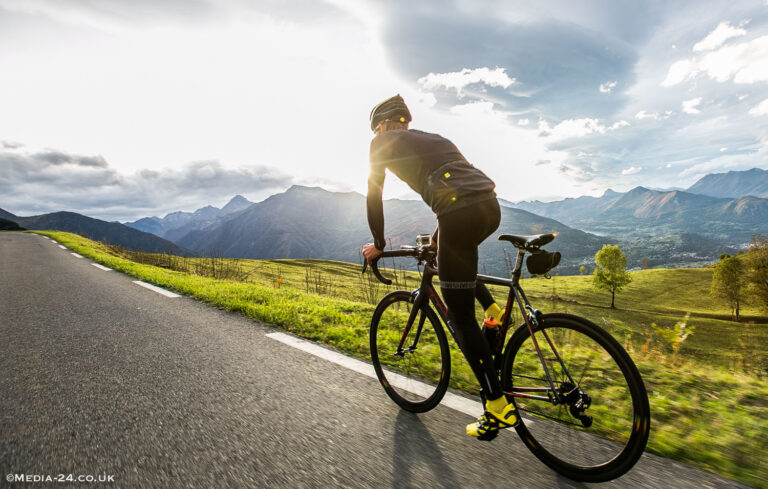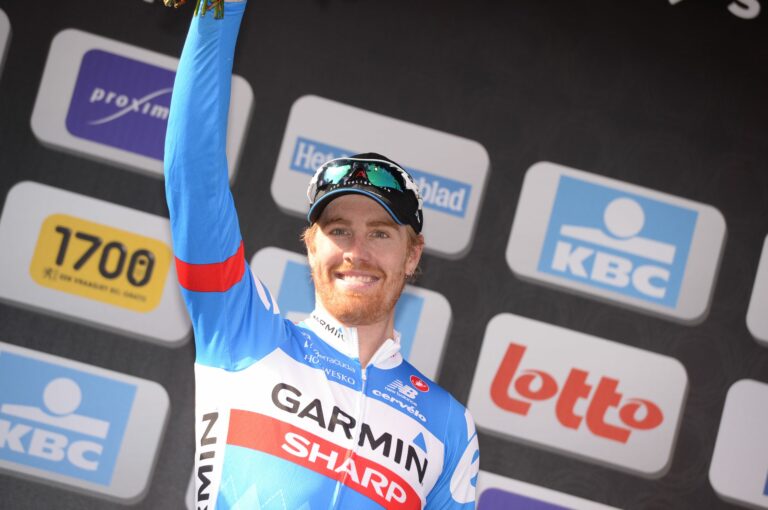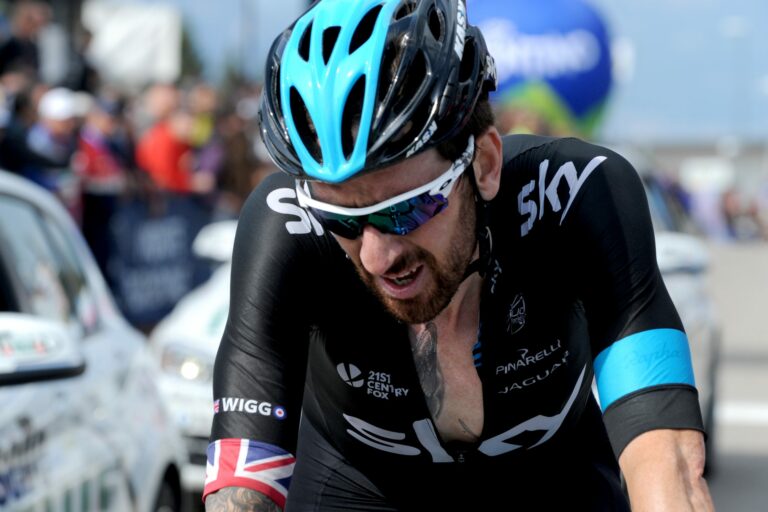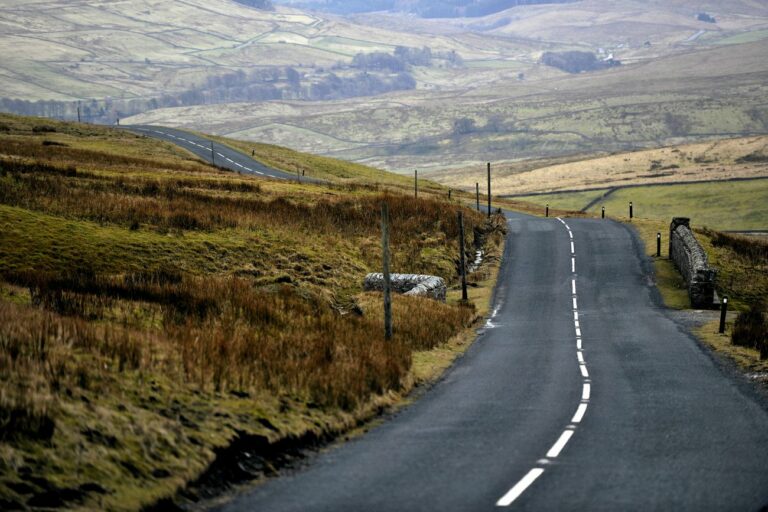Belfast has set the standard.
The Grande Partenza of the 2014 Giro d’Italia has undoubtedly been a success, for the race and for the city. Hotels were fully booked, pubs and restaurants filled, and thousands of people lined the roads to watch the opening two stages of the 97th edition of the race.
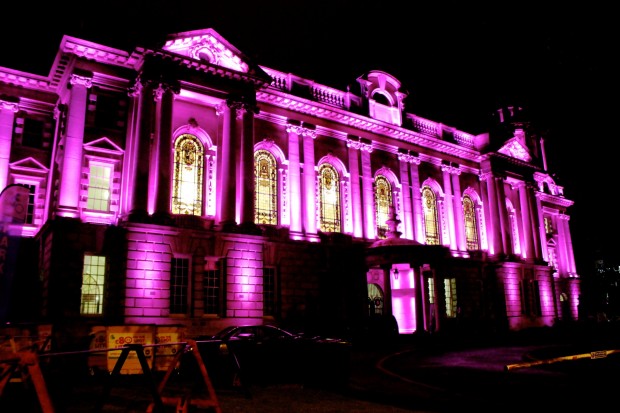
For many, it was their first experience of bike racing, and most of those, whose introduction to the sport has come courtesy of the world’s best riders, are hoping it won’t be the last. The expressions on the faces of young and old when the sleek trains of riders contesting the opening stage team time trial passed was something to behold. Their sporting instinct was impeccable – dropped riders received the same encouragement as those moving at top speed.
Rain was expected, but when it arrived did nothing to dampen the enthusiasm of the people in Belfast, who bore it with good grace, perhaps familiarity having long since bred in them a contempt for wet weather
In the paddock adjacent to the city’s magnificent Titanic Belfast, an €80m structure designed by the architect Eric Kuhne, visitors got close to the riders and their machines ahead of stage two, but kept a respectful distance. Where cordons were absent, they formed their own semi-circles in front of the team buses. Bikes were examined visually, but no more. Look, but don’t touch was the unspoken code. The riders climbed aboard their bikes and pedaled the short distance to the stage through the crowds. Watching them negotiate the moving barriers with practiced ease was a sight to behold.
Visitors arriving at Belfast City Airport received an immediate reminder of the Giro’s imminent arrival from the giant posters that decorated the corridors leading to baggage reclaim. The arrivals lounge played host to reps from the city newspaper, handing out Giro-themed goodie bags. Members of the considerably larger RCS contingent changed money and waited for taxis, unmistakably Italian, event those without the official jackets.
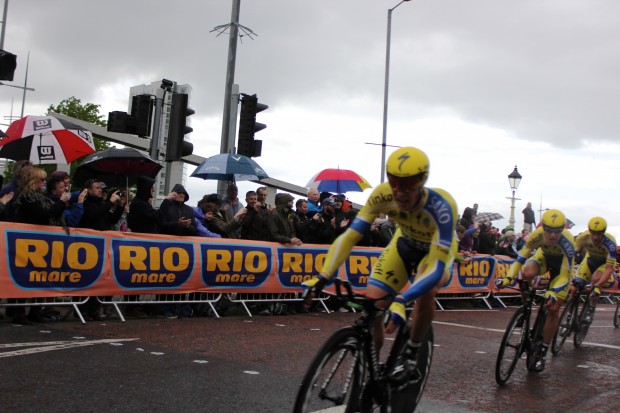
Our taxi driver offered more immediate assurance that the Grande Partenza was indeed a big deal for city. The place was buzzing, he reported, even as early as Thursday and with the team presentations outside the City Hall then just hours away. A crowd several thousand strong turned out that evening to cheer the riders, with Ireland’s Nico Roche receiving the warmest welcome. Visibly moved, Roche returned the welcome with waves and smiles.
We watched from just past the finish line as the riders flew past, still travelling at speed and causing alarm among the drivers they encountered on adjacent open roads. Luca Paolini raised a conciliatory bidon as he edged into the traffic, in a scene that can accurately be described as incongruous
He benefitted from a similar show of support the following evening when his Tinkoff-Saxo team rolled out for the 21.7km team time trial through the city centre. A very creditable fourth place has given his Giro campaign solid foundations. It is in the Italian Dolomites, rather than the comparatively flat conditions of his homeland where Roche will shine, but should he replicate his success at last year’s Vuelta a Espana and taste stage victory, it will be with the spirit of those who cheered him so passionately in Belfast.
Rain was expected, but when it arrived did nothing to dampen the enthusiasm of the people in Belfast, who bore it with good grace, perhaps familiarity having long since bred in them a contempt for wet weather. They took up positions at the roadside in numbers almost an hour before the team time trial, in fine weather. After just two teams had rolled out, however, the rain began and became steadily heavier. No one left. The support, if anything, grew more fervent.
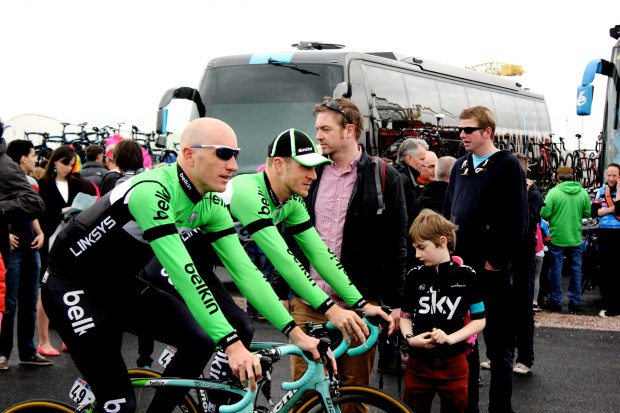
It was a similar story on stage two, when villagers lining the route along the coastline bore the brunt of the conditions along with those pedaling. Television pictures revealed that both parties were equally unaffected by the conditions. The riders may have been cold and wet, but they would have been warmed by the enthusiastic support, which, like that experienced in the city the night before, was steadfast.
The Grand Départ is bound for Yorkshire in July and the county has been placed on its mettle by the show put on across the Irish Sea. Pink sheep, pink pylons, and a population dressed in pink provided very visible tokens of the warm reception afforded the Grande Partenza
On the Saturday, the crowds in city were more fortunate. Damp roads were the worst they and the riders experienced as the peloton hurtled through Wellington Place and into Donegall Square North, where the finish gantry had been erected in front of the splendid City Hall. Marcel Kittell had read the script and delivered the expected victory, winning handsomely.
We watched from just past the finish line as the riders flew past, ostensibly slowing down but still travelling at speed and causing, it must be admitted, a certain amount of alarm among drivers they encountered on adjacent open roads. Luca Paolini, one of the peloton’s elder statesman, raised a conciliatory bidon as he edged into the traffic in a scene that can accurately be described as incongruous. The vision was matched only by that of his Katusha team-mate, the world number, Joaquim Rodriguez, giving an impromptu interview to a journalist jogging alongside with a voice recorder proffered in the rider’s direction.
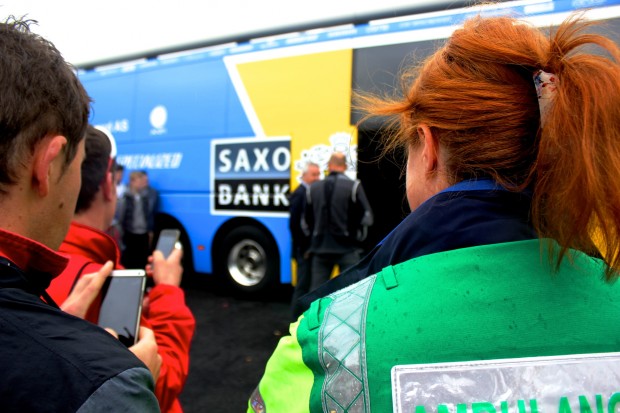
Attention will turn to Armagh and Dublin, the start and finish points of the third stage. The rural departure point should provide television images to rival the dramatic coastline showcased on stage two, while the Irish capital, with its famed university, and famous cycling son, will provide more pictures to tell Ireland’s story to a worldwide audience. Stephen Roche, who won the race in 1987, and who has been a very visible presence throughout this Grande Partenza, will be on home soil, and if his son remains safely in contention, a celebration of sorts will be justified.
Incredibly, the visit of the Giro is only the first of two Grand Tours coming to our corner of the world this year. The Grand Départ of the Tour de France is of course bound for Yorkshire in July and the county has been placed on its mettle by the show put on across the Irish Sea. Pink sheep, pink pylons, and a population largely dressed in pink have provided very visible tokens of the warm reception afforded to the Italian race during its sojourn in Northern Ireland and Ireland. Many displays of yellow will be required from the people of Yorkshire to match the welcome.


